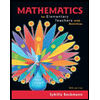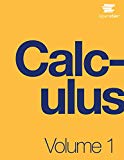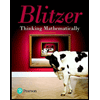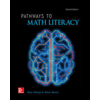
Differential Equations
4th Edition
ISBN: 9780495561989
Author: Paul Blanchard, Robert L. Devaney, Glen R. Hall
Publisher: Cengage Learning
expand_more
expand_more
format_list_bulleted
Concept explainers
Question
Chapter 2.2, Problem 1E
(a)
To determine
To calculate: To determine the
(b)
To determine
To calculate: To sketch enough vectors in the vector field to get a sense of its geometric structure.
(c)
To determine
To calculate: To sketch the associated direction field using HPG system solver.
(d)
To determine
To calculate: To sketch the phase portrait of the system using HPG system solver.
(e)
To determine
To calculate: To describe the behavior of the solutions.
Expert Solution & Answer
Want to see the full answer?
Check out a sample textbook solution
Students have asked these similar questions
I'm not too sure how to calculate vector fields
Blocks A (mass 5.00 kg) and B (mass 6.50 kg)
move on a frictionless, horizontal surface. Initially,
block B is at rest and block A is moving toward it at
5.00 m/s. The blocks are equipped with ideal spring
bumpers. The collision is head-on, so all motion
before and after the collision is along a straight line.
Let +x be the direction of the initial motion of block
А.
Part C
Find the velocity of block B when the energy stored in the spring bumpers is maximum.
Express your answer with the appropriate units.
HÀ
VB =
Value
Units
Submit
Request Answer
Part D
Find the velocity of block A after they have moved apart.
Express your answer with the appropriate units.
HÅ
?
VĀ =
Value
Units
A projectile is launched with an initial speed of 220 feet per second at a height of 4 feet and at an angle of 45° with the horizontal. (a) Determine the vector-valued function for the path of the projectile. (b) Use a graphing utility to graph the path and approximate the maximum height and range of the projectile. (c) Find v(t), v(t), and a(t). (d) Use a graphing utility to complete the table.
Chapter 2 Solutions
Differential Equations
Ch. 2.1 - Exercises 1-6 refer to the following systems of...Ch. 2.1 - Exercises 1-6 refer to the following systems of...Ch. 2.1 - Exercises 1-6 refer to the following systems of...Ch. 2.1 - Exercises 1-6 refer to the following systems of...Ch. 2.1 - Prob. 5ECh. 2.1 - Prob. 6ECh. 2.1 - Consider the predator-prey system...Ch. 2.1 - Consider the predator-prey system dRdt=2R(1R...Ch. 2.1 - Exercises 9-14 refer to the predator-prey and the...Ch. 2.1 - Exercises 9-14 refer to the predator-prey and the...
Ch. 2.1 - Exercises 9-14 refer to the predator-prey and the...Ch. 2.1 - Prob. 12ECh. 2.1 - Prob. 13ECh. 2.1 - Exercises 9-14 refer to the predator-prey and the...Ch. 2.1 - Prob. 15ECh. 2.1 - Consider the system of predator-prey equations...Ch. 2.1 - Pesticides that kill all insect species are not...Ch. 2.1 - Some predator species seldom capture healthy adult...Ch. 2.1 - Prob. 19ECh. 2.1 - Consider the initial-value problem d2ydt2+kmy=0...Ch. 2.1 - A mass weighing 12 pounds stretches a spring 3...Ch. 2.1 - A mass weighing 4 pounds stretches a spring 4...Ch. 2.1 - Do the springs in an “extra firm’ mattress have a...Ch. 2.1 - Consider a vertical mass-spring system as shown in...Ch. 2.1 - Exercises 25—30 refer to a situation in which...Ch. 2.1 - Prob. 26ECh. 2.1 - Prob. 27ECh. 2.1 - Prob. 28ECh. 2.1 - Prob. 29ECh. 2.1 - Exercises 25—30 refer to a situation in which...Ch. 2.2 - Prob. 1ECh. 2.2 - Prob. 2ECh. 2.2 - Prob. 3ECh. 2.2 - Prob. 4ECh. 2.2 - Prob. 5ECh. 2.2 - Prob. 6ECh. 2.2 - Prob. 7ECh. 2.2 - Convert the second-order differential equation 1...Ch. 2.2 - Prob. 9ECh. 2.2 - Consider the system dxdt=2x+ydydt=2y and its...Ch. 2.2 - Eight systems of differential equations and four...Ch. 2.2 - Consider the modified predator-prey system...Ch. 2.2 - In Exercises 13—18. (a) find the equilibrium...Ch. 2.2 - Prob. 14ECh. 2.2 - Prob. 15ECh. 2.2 - In Exercises 13—18. (a) find the equilibrium...Ch. 2.2 - Prob. 17ECh. 2.2 - In Exercises 13—18. (a) find the equilibrium...Ch. 2.2 - Prob. 19ECh. 2.2 - Prob. 20ECh. 2.2 - Consider the four solution curves in the phase...Ch. 2.2 - Prob. 22ECh. 2.2 - Prob. 23ECh. 2.2 - Prob. 24ECh. 2.2 - Prob. 25ECh. 2.2 - Prob. 26ECh. 2.2 - Prob. 27ECh. 2.3 - In Exercises 1—4, a harmonic oscillator equation...Ch. 2.3 - In Exercises 1—4, a harmonic oscillator equation...Ch. 2.3 - In Exercises 1—4, a harmonic oscillator equation...Ch. 2.3 - In Exercises 1—4, a harmonic oscillator equation...Ch. 2.3 - Prob. 5ECh. 2.3 - In the damped harmonic oscillator, we assume that...Ch. 2.3 - Consider any damped harmonic oscillator equation...Ch. 2.3 - Consider any damped harmonic oscillator equation...Ch. 2.3 - In Exercises 9 and 10, we consider a mass sliding...Ch. 2.3 - In Exercises 9 and 10, we consider a mass sliding...Ch. 2.4 - In Exercises 1-4, we consider the system...Ch. 2.4 - In Exercises 1-4, we consider the system...Ch. 2.4 - In Exercises 1-4, we consider the system...Ch. 2.4 - In Exercises 1-4, we consider the system...Ch. 2.4 - In Exercises 5-12, we consider the partially...Ch. 2.4 - Prob. 6ECh. 2.4 - In Exercises 5-12, we consider the partially...Ch. 2.4 - Prob. 8ECh. 2.4 - In Exercises 5-12, we consider the partially...Ch. 2.4 - In Exercises 5-12, we consider the partially...Ch. 2.4 - Prob. 11ECh. 2.4 - Prob. 12ECh. 2.4 - Consider the partially decoupled system...Ch. 2.5 - Prob. 1ECh. 2.5 - Prob. 2ECh. 2.5 - Prob. 3ECh. 2.5 - In Exercises 3—6, a system, an initial condition,...Ch. 2.5 - Prob. 5ECh. 2.5 - Prob. 6ECh. 2.5 - Using a computer or calculator, apply Euler’s...Ch. 2.5 - Prob. 8ECh. 2.6 - Consider the system dxdt=x+ydydt=y (a) Show that...Ch. 2.6 - Prob. 2ECh. 2.6 - Prob. 3ECh. 2.6 - Prob. 4ECh. 2.6 - Prob. 5ECh. 2.6 - Prob. 6ECh. 2.6 - Prob. 7ECh. 2.6 - (a) Suppose Y1(t) is a solution of an autonomous...Ch. 2.6 - Prob. 9ECh. 2.6 - Consider the system dxdt=2dydt=y2 (a) Calculate...Ch. 2.6 - Consider the system dxdt=2dydt=y2 Show that, for...Ch. 2.7 - Prob. 1ECh. 2.7 - In the SIR model, we assume that everyone in the...Ch. 2.7 - Vaccines make it possible to prevent epidemics....Ch. 2.7 - Prob. 4ECh. 2.7 - Prob. 5ECh. 2.7 - One of the basic assumptions of the SIR model is...Ch. 2.7 - Prob. 7ECh. 2.7 - Prob. 8ECh. 2.7 - Prob. 9ECh. 2.7 - Using =1.66 and the value of that you determined...Ch. 2.8 - Prob. 1ECh. 2.8 - Prob. 2ECh. 2.8 - Prob. 3ECh. 2.8 - Prob. 4ECh. 2.8 - Prob. 5ECh. 2 - Prob. 1RECh. 2 - Short answer exercises: Exercises 1-14 focus on...Ch. 2 - Short answer exercises: Exercises 1-14 focus on...Ch. 2 - Short answer exercises: Exercises 1-14 focus on...Ch. 2 - Short answer exercises: Exercises 1-14 focus on...Ch. 2 - Short answer exercises: Exercises 1-14 focus on...Ch. 2 - Prob. 7RECh. 2 - Prob. 8RECh. 2 - Prob. 9RECh. 2 - Prob. 10RECh. 2 - Prob. 11RECh. 2 - Prob. 12RECh. 2 - Short answer exercises: Exercises 1-14 focus on...Ch. 2 - Prob. 14RECh. 2 - Prob. 15RECh. 2 - Prob. 16RECh. 2 - Prob. 17RECh. 2 - Prob. 18RECh. 2 - Prob. 19RECh. 2 - Prob. 20RECh. 2 - Prob. 21RECh. 2 - Prob. 22RECh. 2 - Prob. 23RECh. 2 - Prob. 24RECh. 2 - Prob. 25RECh. 2 - Prob. 26RECh. 2 - Prob. 27RECh. 2 - Prob. 28RECh. 2 - Prob. 29RECh. 2 - Prob. 30RECh. 2 - In Exercises 31-34, a solution curve in the...Ch. 2 - Prob. 32RECh. 2 - Prob. 33RECh. 2 - Prob. 34RECh. 2 - Consider the partially decoupled system...Ch. 2 - Consider the partially decoupled system...Ch. 2 - Prob. 37RE
Knowledge Booster
Learn more about
Need a deep-dive on the concept behind this application? Look no further. Learn more about this topic, subject and related others by exploring similar questions and additional content below.Similar questions
- (8) Find a vector parameterization of the line r(t) which passes through the point P = (1,2, –8) with direction vector v = (2, 1, 3).arrow_forwardMatch the vector fields: ? curl(F)=0 ? curl(F)=2 V 2. div(F)=0, ? curl(F)=0 ? V 3. div(F)=-1, 1. div(F)=4, ? curl(F)=1 V 4. div(F)=-2, V 5. div(F)=-2, curl(F)=-1 ? curl(F)=3 6. div(F)=2, A D B E C Farrow_forward= 2. (Section 14.4) Let curve C be described by vector function(t) (cost 1, sint, ³/2) on 0 ≤ t ≤ b. Find the value(s) of b so that the length of the curve on the given interval is 18 units.arrow_forward
- An object has the velocity vector function i(t) = (5, 4e“, 2t + 6) and initial position 7 (0) = (– 2, 1, – 3) A) Find the vector equation for the object's position. F(t) > B) Find the vector equation for the object's acceleration. a(t) = >arrow_forward6) Find the initial point of the vector that is equivalent to u= (1. 2) and whose terminal point is B(2. 0).arrow_forwardThe position vector r describes the path of an object moving in space. Position Vector Time r(t) = 9ti + tj + t²k_ t = 2 (a) Find the velocity vector v(t), speed s(t), and acceleration vector a(t) of the object. v(t) = = s(t) = a(t) = (b) Evaluate the velocity vector and acceleration vector of the object at the given value of t. v(2) = a(2) =arrow_forward
- 2. Is it possible to determine a vector i so that vet is a solution to the system (1 2 X'(t) = (4 X (t)? 3 Why or why not? Explain and show work as needed.arrow_forwardFind the location at t = 3 of a particle whose path satisfies dr = (181-1712-21-4) dt + r(0) = (8,7) (Use symbolic notation and fractions where needed. Give your answer in vector form.) r(3) = (54,4) Incorrectarrow_forwardSketch the curve represented by the vector-valued function r(t) = (t + 1)i + (3t − 1)j + 2tk and give the orientation of the curve.arrow_forward
- match the vector field with one of the graphs (I)-(VI).arrow_forwardSolve for the angular velocity and acceleration from the XYZ rotation matrixarrow_forwardFind the location at t = 3 of a particle whose path satisfies dr-(18-12-28-4) (t + 1)² dt = r(3) = 2t r(0) = (12, 6) (Use symbolic notation and fractions where needed. Give your answer in vector form.)arrow_forward
arrow_back_ios
SEE MORE QUESTIONS
arrow_forward_ios
Recommended textbooks for you
 Discrete Mathematics and Its Applications ( 8th I...MathISBN:9781259676512Author:Kenneth H RosenPublisher:McGraw-Hill Education
Discrete Mathematics and Its Applications ( 8th I...MathISBN:9781259676512Author:Kenneth H RosenPublisher:McGraw-Hill Education Mathematics for Elementary Teachers with Activiti...MathISBN:9780134392790Author:Beckmann, SybillaPublisher:PEARSON
Mathematics for Elementary Teachers with Activiti...MathISBN:9780134392790Author:Beckmann, SybillaPublisher:PEARSON
 Thinking Mathematically (7th Edition)MathISBN:9780134683713Author:Robert F. BlitzerPublisher:PEARSON
Thinking Mathematically (7th Edition)MathISBN:9780134683713Author:Robert F. BlitzerPublisher:PEARSON Discrete Mathematics With ApplicationsMathISBN:9781337694193Author:EPP, Susanna S.Publisher:Cengage Learning,
Discrete Mathematics With ApplicationsMathISBN:9781337694193Author:EPP, Susanna S.Publisher:Cengage Learning, Pathways To Math Literacy (looseleaf)MathISBN:9781259985607Author:David Sobecki Professor, Brian A. MercerPublisher:McGraw-Hill Education
Pathways To Math Literacy (looseleaf)MathISBN:9781259985607Author:David Sobecki Professor, Brian A. MercerPublisher:McGraw-Hill Education

Discrete Mathematics and Its Applications ( 8th I...
Math
ISBN:9781259676512
Author:Kenneth H Rosen
Publisher:McGraw-Hill Education

Mathematics for Elementary Teachers with Activiti...
Math
ISBN:9780134392790
Author:Beckmann, Sybilla
Publisher:PEARSON


Thinking Mathematically (7th Edition)
Math
ISBN:9780134683713
Author:Robert F. Blitzer
Publisher:PEARSON

Discrete Mathematics With Applications
Math
ISBN:9781337694193
Author:EPP, Susanna S.
Publisher:Cengage Learning,

Pathways To Math Literacy (looseleaf)
Math
ISBN:9781259985607
Author:David Sobecki Professor, Brian A. Mercer
Publisher:McGraw-Hill Education